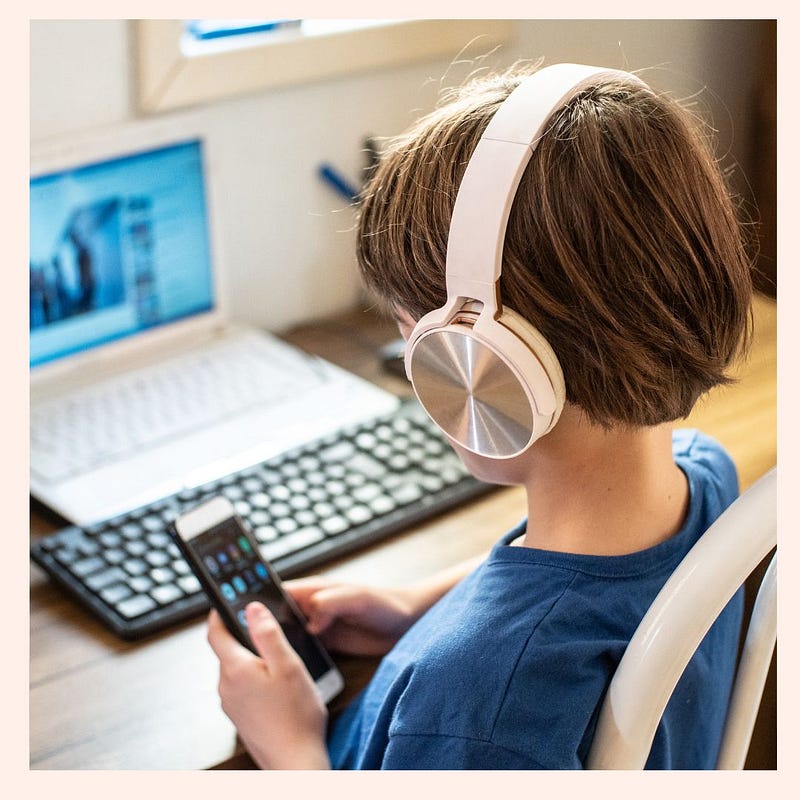Navigating Childhood Technology Addiction: Insights and Solutions
Written on
Understanding Technology Addiction in Children
Albert Einstein once expressed concern about the potential decline of human interaction due to advancing technology, stating, “I fear the day the technology will surpass our human interaction. The world will have a generation of idiots.”

As technology progresses at an unprecedented pace, it’s not surprising that many children are growing up in an environment where tech addiction is becoming increasingly prevalent. Numerous anecdotes from clients and acquaintances indicate that some children exhibit extreme reactions—anger, aggression, and even violence—when faced with limits on their tech use. In some cases, therapy has been sought to address these issues.
Reflecting on my own childhood in the late '80s, I recall a time when technology was just beginning to infiltrate daily life. My parents were understandably cautious as my world started to revolve around emerging technologies—like waiting for a dial-up connection to download a single song or coding ringtones on my first Sony Ericsson phone. They believed that these changes were problematic, yet we now find ourselves in a vastly different technological landscape.
As a parent of two children who are similarly enchanted by technology, I have observed the detrimental effects it can have on both their peers and themselves, leading me to impose some boundaries. My 14-year-old son has transitioned from various gaming consoles to a full-fledged PC gaming setup, complete with an iPhone. Throughout his early years, I made it a point to regulate technology use in our household, allowing gaming only during designated times. While there were occasional meltdowns over time limits or consequences, he never exhibited extreme behavior.
However, things shifted when he turned 11 and began secondary school, receiving his first mobile phone. Despite still having rules in place, I noticed an increase in his attempts to negotiate for more screen time, often citing homework as justification for extended laptop use.
One evening, while I was busy in the kitchen, a loud noise prompted me to rush upstairs. “What happened?” I inquired. My son, tearful and distraught, explained that he lost hours of work on Roblox due to a game crash, leading to an outburst of frustration that damaged our computer desk. In that moment, despite my efforts to console him, nothing I said could alleviate his anger.
I also observed frequent spending on game passes and avatars—items that children seem to crave—further indicating the need to manage this technology addiction. As Dr. Nicole Beurkens notes, “Excessive device use leads to changes in a child’s brain that can negatively impact all areas of their life.”
What Do the Numbers Reveal?
A CNN Health article reported findings from a poll by Common Sense Media that examined technology addiction among families. Key statistics included:
- 69% of parents and 78% of teens check their devices at least hourly.
- 50% of teens believe they are addicted to their mobile devices.
- 66% of parents feel their teen spends too much time on their mobile devices.
- 72% of teens feel compelled to respond to notifications immediately.
These statistics highlight the significant impact technology has on teenagers, with many feeling the need to check devices frequently. Interestingly, parents are not far behind in their device usage, and while they may recognize their children's excessive screen time, teens often admit to their own addiction.
Given my experience with a teenage son and a pre-teen, I can certainly relate to these observations.
Strategies for Change
So, how can we effectively address this issue?
- Model Healthy Behavior: As parents, we must acknowledge our own screen time habits. Whether on our phones, computers, or game consoles, we need to set an example. If we're constantly engaged in screen time, our children will likely adopt similar behaviors.
- Establish Boundaries: Implementing clear boundaries for both yourself and your child is crucial. With modern technology, we can utilize features that restrict screen time and silence notifications during specific periods.
- Prioritize Family Time: Scheduling dedicated family activities where devices are not permitted can significantly improve communication and connection within the family. I've found that planning technology-free times helps my children engage more fully with each other and me.
These measures foster connection and communication, allowing us to rediscover each other beyond the distractions of technology. Initially, your child may seem eager to return to their devices, but with time, this urge will likely diminish as everyone adapts to the changes.
Always keep in mind that your actions serve as a model for your children. What you expose them to shapes their behaviors. Thus, let’s make a concerted effort to disconnect from technology and reconnect with those we cherish.
“Our goal with kids is to maintain a connection with their hearts while teaching skills, boundaries, & behaviour.” — Sarah Boyd
By cultivating a growth mindset, we can lead more fulfilling lives. I challenge you to shift your perspective.
Peace & Blessings,
Chelle — Dreamcare Coaching
www.dreamcarecoaching.com
Chapter 2: YouTube Insights on Technology Addiction
To delve deeper into this topic, check out these insightful videos:
The first video, "Are Our Children Addicted To Technology? | This Morning", explores the alarming rise of technology addiction among youth and its implications on their behavior.
The second video, "Can We Stop Kids From Becoming Addicted To Tech And Social Media? | The Show | Dad Saves America", offers practical solutions for parents to combat this growing concern.